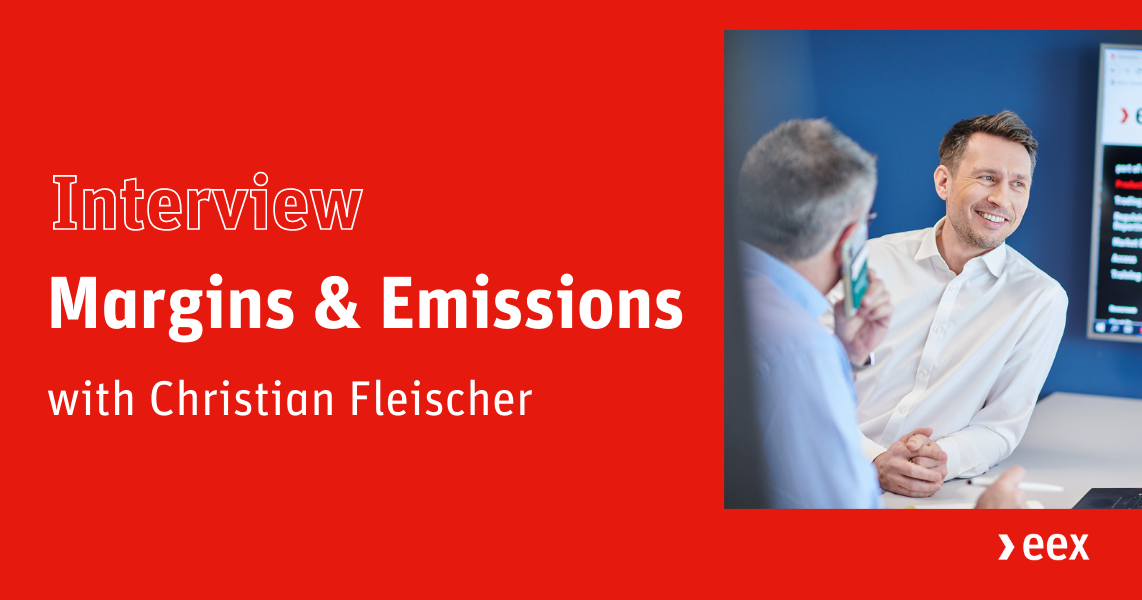
How to optimize margin requirements cross commodity
Have you ever heard that the perception of some market participants is that margining in the cleared markets is a burden? Alternatively, others think margining is the appropriate coverage of involved risks when we look at the current market conditions. We explored the role of margining in the cleared markets in an interview with Christian Fleischer, Head of Sales Environmentals at EEX, delving into what EEX suggests to their clients to manage their margin requirements.
Looking at current market conditions, market participants may perceive margining of the cleared markets rather as a burden than an appropriate coverage of involved risks. What does EEX suggest to their clients to manage their margin requirements?
Christian: Well, first of all, and against the extraordinary volatility in the markets, our clients are handling their margin requirements very well. Many clients have of course taken internal measures to mitigate undesired impacts or to reduce their margin requirements. But there are further measures that could be taken in this respect. Many of our power clients are naturally active in other asset classes, often in Emissions, some also in Gas markets. Those clients may significantly benefit from our cross-margining, when combining counter positions on EEX/ECC, for instance, a short power position with a long Emissions and/or a long Gas position. There are mid double-digit (inter commodity-spreads) savings possible for the added positions in comparison to their single position margin values. Clients may assess the savings themselves by usingPC-SPAN or just asking us to do simulation calculations. I mean, clients are asking for that already and are evaluating the move of positions right now. So there seems to be some pressure to do something and this seems to be a valid option.
You indicated that there are more options, what else, beyond cross-margining, may serve as an instrument to reduce margin effects?
Christian: Yes, a second option has recently been announced. Since February we are offering an improved model of EUA as collateral. I think the timing is good, facing this immense volatility, which of course is reflected in higher margin levels. In general, it works as follows; clients, that hold long EUA spot positions can pledge those EUA's at ECC and by that, reduce their entire margin requirements by up to 20%. One remark here, however, the model is currently limited to cover margins from EUA Derivatives short positions as well as any spot trade. Market participants interested in the model may reach out to their local Sales Manager or by e-mail to sales@eex.com.
Which other aspects are seen as benefits for clients to be active on or join EEX for Emissions trading?
Christian: I think there are plenty of reasons to trade with EEX. First of all, there are the European power markets - with the German market being the biggest exchange-traded power market in the world. Keeping in mind that the power markets are closely tied to emissions trading, EEX provides access to a strong client base. Furthermore, since Brexit, EEX remains the only exchange in the EU that conducts the EU auctions (European auction platform). In this position , EEX serves solely for the supply of EUAs into the EU secondary market. I don't need to emphasize the advantages that would come along with the combination of primary and secondary market trading on one platform, be it on streamlined processes, waiving on registry transfers and exchange swaps, avoiding positions spread across different exchanges or even EUA as collateral. To sum it up, EEX provides a seamless trading experience - from spot to derivatives trading.
What exactly do you mean by "seamless trading experience"? What else makes it seamless other than offering the complete product range?
Christian: Well, you know that EEX' clearing house ECC is well established with their professional clearing services. With regards to Emissions trading, that means that ECC handles the EUA deliveries itself. Our clients are not dependent on their Clearing Banks to cover the process. The ECC internal delivery process takes place at a specific time and is not conducted over dozens of hours. Additionally, and this is one of the key features, it does not require the EU registry to be in operation as it works completely independent via ECC internal accounts. Our clients can buy certificates or may cover short obligations with amounts held at ECC. The latter is the client's ECC internal account, which is centrally used as a) destination for any auction, spot or futures deliveries and b) target of all delivery obligations stemming from selling activities. Bought certificates may furthermore be transferred to your own or a client's registry account within one day - and that for free. We even offer a same-day transfer of existing amounts only depending on registry opening times. I think all in all EEX/ECC provides comprehensive and cost-efficient Emissions trading and clearing offering.
If you have any further questions, feel free to reach out to us via sales@eex.com.
Save the date | ECC's Margin Optimization Tools Webinar | 13 April 2022
